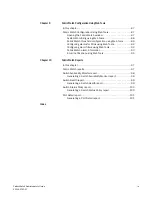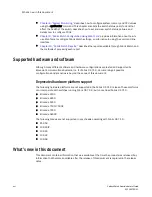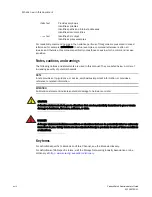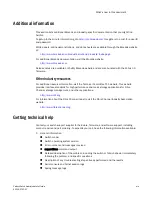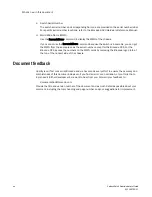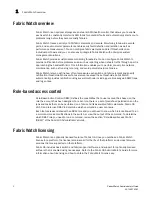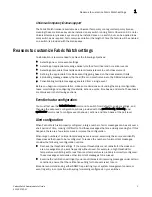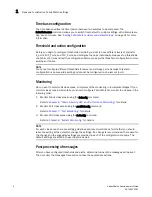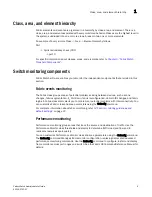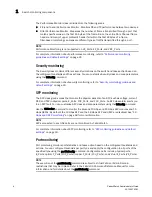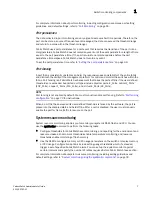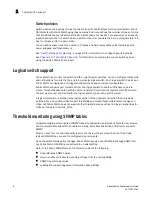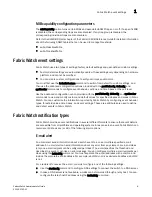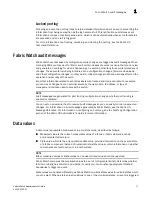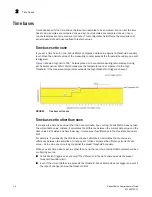
Fabric Watch Administrator’s Guide
3
53-1002752-01
Reasons to customize Fabric Watch settings
1
Universal temporary license support
The Fabric Watch license is available as a Universal Temporary or a regular temporary license,
meaning the same license key can be installed on any switch running Fabric OS version 6.3 or later.
Universal temporary license keys can only be installed once on a switch, but can be applied to as
many switches as required. Temporary use duration (the length of time the feature will be enabled
on a switch) is provided with the license keys.
Reasons to customize Fabric Watch settings
Customization is recommended to achieve the following objectives:
•
Selecting one or more event settings
•
Selecting an appropriate message delivery method for critical and noncritical events
•
Selecting appropriate thresholds and alarm levels relevant to each class element
•
Defining the appropriate Time Base event triggering based on the class element traits
•
Eliminating message delivery that has little or no practical value to the SAN administrator
•
Consolidating multiple messages generated from a single event
Before you begin an implementation, make some decisions surrounding the major configuration
tasks: monitoring and configuring thresholds, actions, events, time bases, and alerts. These tasks
are discussed in the following sections.
Event behavior configuration
You must first use the fwSetToCustom command to switch from default to custom settings, and
then use the advanced configuration options provided with the portThConfig, thConfig, and
sysMonitor commands to configure event behavior, actions, and time bases at the port level.
Alert configuration
When Fabric Watch is improperly configured, a large number of error messages can be sent over a
short period of time, making it difficult to find those messages that are actually meaningful. If this
happens, there are a few simple ways to improve the configuration.
When large numbers of unimportant messages are received, examining the source can identify
those classes that need to be reconfigured. To reduce the number of unimportant messages,
consider the following reconfiguration options:
•
Recheck the threshold settings. If the current thresholds are not realistic for the class and
area, messages may be sent frequently without need. For example, a high threshold for
temperature monitoring set to less than room temperature is probably incorrectly configured.
These messages could cause other important messages to be missed.
•
Examine the notification settings. If you are not interested in receiving messages under certain
conditions, ensure that the notification setting for that event is set to zero.
Brocade recommends using either SNMP trap alerting to your system management console or
event log entry in conjunction with syslog forwarding configured on your switches.
Summary of Contents for Fabric Watch
Page 10: ...x Fabric Watch Administrator s Guide 53 1002752 01 ...
Page 12: ...xii Fabric Watch Administrator s Guide 53 1002752 01 ...
Page 14: ...xiv Fabric Watch Administrator s Guide 53 1002752 01 ...
Page 38: ...18 Fabric Watch Administrator s Guide 53 1002752 01 Fabric Watch alarm behavior 2 ...
Page 42: ...22 Fabric Watch Administrator s Guide 53 1002752 01 Fabric Watch classes areas and elements 3 ...
Page 56: ...36 Fabric Watch Administrator s Guide 53 1002752 01 Notification configuration 5 ...

